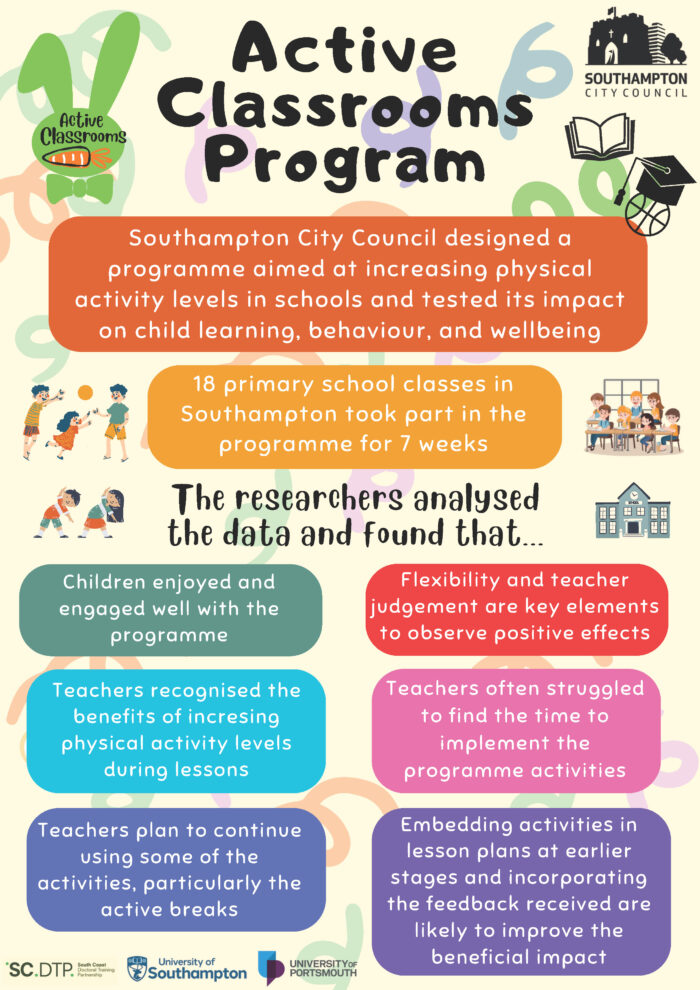Date: 05/11/2024
Author Bio: Francesca Zecchinato and Holly Radford

Francesca Zecchinato
Francesca is an ESRC SCDTP funded PhD Candidate in the Centre for Innovation in Mental Health at the University of Southampton. Her research relates to the intergenerational transmission of psychopathology and the promotion of child mental health.
“My PhD project focuses on the prevention of children’s adverse psychological outcomes and I am constantly immersed in literature related to hindering and promoting factors for child wellbeing. While I greatly enjoy and value conducting literature reviews and analysing existing data to fill gaps in research and advance our understanding of the topic, I am also always on the lookout for opportunities to contribute in a more direct and practical way to young people’s positive development. That is way, when I came across this internship opportunity with the Southampton City Council, I did not hesitate to apply.”

Holly Radford
Holly is a part-time Psychology PhD student at the University of Portsmouth, researching nonverbal communication in autistic people. Holly is particularly interested in facial expression and gesture use, the Double Empathy Problem, and cross-neurotype communication between autistic and non-autistic people.
“This internship provided me with the opportunity to combine my research skills with my previous experience in teaching and health education. As an ex-teacher I am passionate about inclusion and enabling children to be happy, healthy, and to fulfil their potential.”
Blogpost
Childhood obesity rates in the UK show that 21.3% of children in Reception Year, and 36.6% of children in Year 6, are overweight or obese (NHS Digital, 2023). Overall, these rates have decreased over the last year (NHS Digital, 2022); however, in Southampton, the figures are higher than the national average, with 22.5% of children in Reception Year, and 40.5% of children in Year 6 being overweight or obese (NHS Digital, 2023) and have increased from the previous year’s percentages (NHS Digital, 2022).
Consequently, addressing the issue of the increasing numbers of children in Southampton who are overweight or obese is a priority for Southampton City Council (https://www.southampton.gov.uk/schools-learning/support-inclusion-education/healthy-schools/healthy-sustainable-schools/). One way of tackling this problem is to increase children’s levels of physical activity. Considering that children spend 6-7 hours a day at school, and that 70% of this time is sedentary (Mantjes et al., 2012), the school day is a good focus for physical activity interventions.
Thus, a team at the Southampton City Council has designed the Active Classrooms programme: an intervention aimed at increasing levels of classroom-based physical activity in Primary School children. The programme provides schools with resources such as physically active lesson plans, physical activity suggestions, and tips for making sedentary lessons more physically active. The programme’s goal is to increase children’s levels of physical activity, alongside improving their learning, behaviour, and wellbeing.
The role that we had as interns in the team was to design and conduct a pilot study of the Active Classroom Programme to evaluate its feasibility and its impact on children’s levels of physical activity, learning, behaviour and wellbeing. During the 6-month part-time internship, we selected and created the study measures, planned a 7-week trial, and collected and analysed child and teachers’ data.
Eighteen classes from four Southampton Primary Schools took part in the pilot study. Overall, children enjoyed and engaged well with the programme and teachers recognised the benefits of physical activity during lessons, expressing the intention to continue using some of the activities after the programme had ended.
Teachers also highlighted some challenges related to the difficulty of finding the time to incorporate the activities into their already planned lessons. Additionally, although there was no strong evidence that the Active Classrooms programme increased levels of physical activity, or improved learning, behaviour, or wellbeing, the activities did appear to improve the mood, alertness, and focus of some children, in some contexts, and no relevant negative effects were reported. Consequently, flexibility and teacher judgement in using the available resources appear to be key elements to be able to observe a positive impact of the programme on the children in the future.
We have produced a research report of the pilot study (see here: osf.io/tmyq4), a short lay summary, and a child-friendly infographic outlining the findings of the research.
Based on the data collected in this pilot study, it is likely that embedding the activities into the lesson plans for each class at an earlier stage and incorporating the feedback received from teachers and children have the potential to improve the quality of the resources and maximise the beneficial impact of the Active Classrooms programme.
Overall, this internship represented a fantastic opportunity to apply our research skills to a novel, non-academic, context, contributing to a programme aimed at improving young people’s wellbeing, and provided the chance to reflect on the challenges related to conducting research outside of university settings, broaden our transferrable skills, and collaborate with schools and professionals with different expertise and backgrounds.

Our published report: Zecchinato, F., & Radford, H. (2024, November 6). Active Classrooms: An Evaluation of a Programme Aimed at Increasing Activity Levels in Schools. Retrieved from osf.io/tmyq4
References
NHS Digital. (2022). National Child Measurement Programme, England, 2021/22 school year. NHS Digital. https://digital.nhs.uk/data-and-information/publications/statistical/national-child-measurement-programme/2021-22-school-year
NHS Digital. (2023). National Child Measurement Programme, England, 2022/2023 School Year. NHS Digital. https://digital.nhs.uk/data-and-information/publications/statistical/national-child-measurement-programme/2022-23-school-year
Mantjes, J. A., Jones, A. P., Corder, K., Jones, N. R., Harrison, F., Griffin, S. J., & van Sluijs, E. M. (2012). School related factors and 1yr change in physical activity amongst 9–11 year old English schoolchildren. International Journal of Behavioral Nutrition and Physical Activity, 9(1), 153. https://doi.org/10.1186/1479-5868-9-153